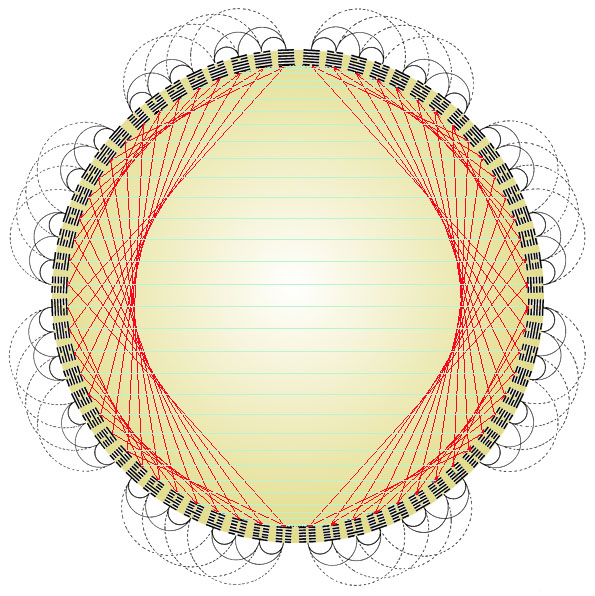
18th May 2007
Challenges to Comprehension Implied by the Logo
of Laetus in Praesens
 |
The pattern above, used as the logo of the Laetus in Praesens initiative, is the result of the search for an image of adequate complexity to hold the variety of conditions of human experience -- and the transformative relationships between them. Seven corresponding maps enable access to descriptions of the modes associated with each of the 64 positions around the above circle.
The features of the pattern are a representation of those identified in the relationships between the set of hexagrams of the I Ching. This has been the subject of extensive commentary. It is of particular interest to an emergent computer-enhanced knowledge society -- since its binary logic was of significance to Gottfried Leibniz in early reflections that resulted in the emergence of modern computer coding. Its merits for understanding human psychodynamics have also been the subject of extensive commentary by Carl Gustav Jung. In a global civilization challenged by the binary logic of faith-based governance, it also offers interesting possibilities for both honouring and recontextualizing polarization (Discovering Richer Patterns of Comprehension to Reframe Polarization, 1998).
Each of the 64 hexagrams around the circle encodes a particular human condition described in highly metaphorical classical commentaries. Each condition can transform into other conditions as implied by the lines across the diagram. In this way the hexagrams and relationships portray the complete pattern of potential changes to the human condition. This pattern, and the commentaries may therefore be used experimentally to explore the relevance of this map for sustainable dialogue, vision, transformative conferencing, sustainable policy, networking, sustainable community, and lifestyles. The hyperlink geometry configuring the individual texts, and the corresponding transformations, is accessible elsewhwere. (For further comments in three parts, see: A / B / C).
As a pattern indicative of a dynamic understanding of unity, the framwork invites experimental animations, as described separately (Dynamic Exploration of Value Configurations: interrelating traditional cultural symbols through animation, 2008). One variant is accessible in video format (Relating cultural symbols using dynamic I Ching configuration, YouTube).
In other articles on the contemporary relevance of the patterns of the I Ching and Tao te Ching to the psychodynamics of governance and sustainability, the point is made that this pattern embodies many of the complexities which are a current preoccupation of studies of complex adaptive systems. In this sense it goes beyond the non-self-referential constraints of the more conventional approaches of the complexity sciences. Put differently it is a study of complexity "with soul" or "with a human face". As such it is potentially highly relevant to modern challenges of governance -- where the more conventional studies are faced with a challenge of comprehensibility. The case for exploring such unconventional patterns has been well made by Susantha Goonatilake (Toward A Global Science: mining civilizational knowledge, 1998) as argued elsewhere (Enhancing the Quality of Knowing through Integration of East-West metaphors, 2000)
|
For further updates on this site, subscribe here |

